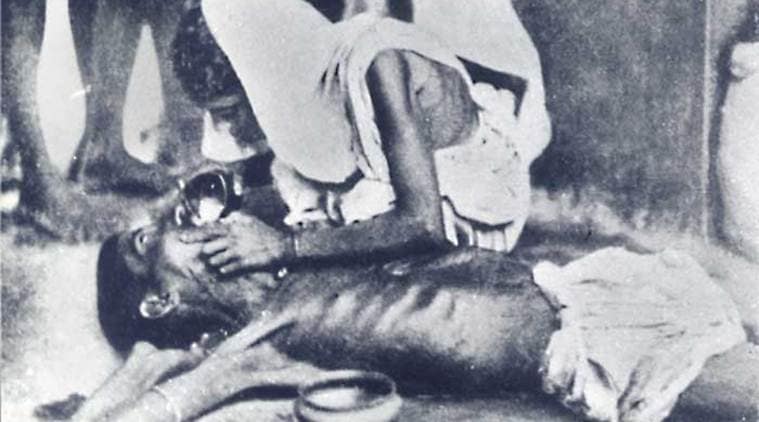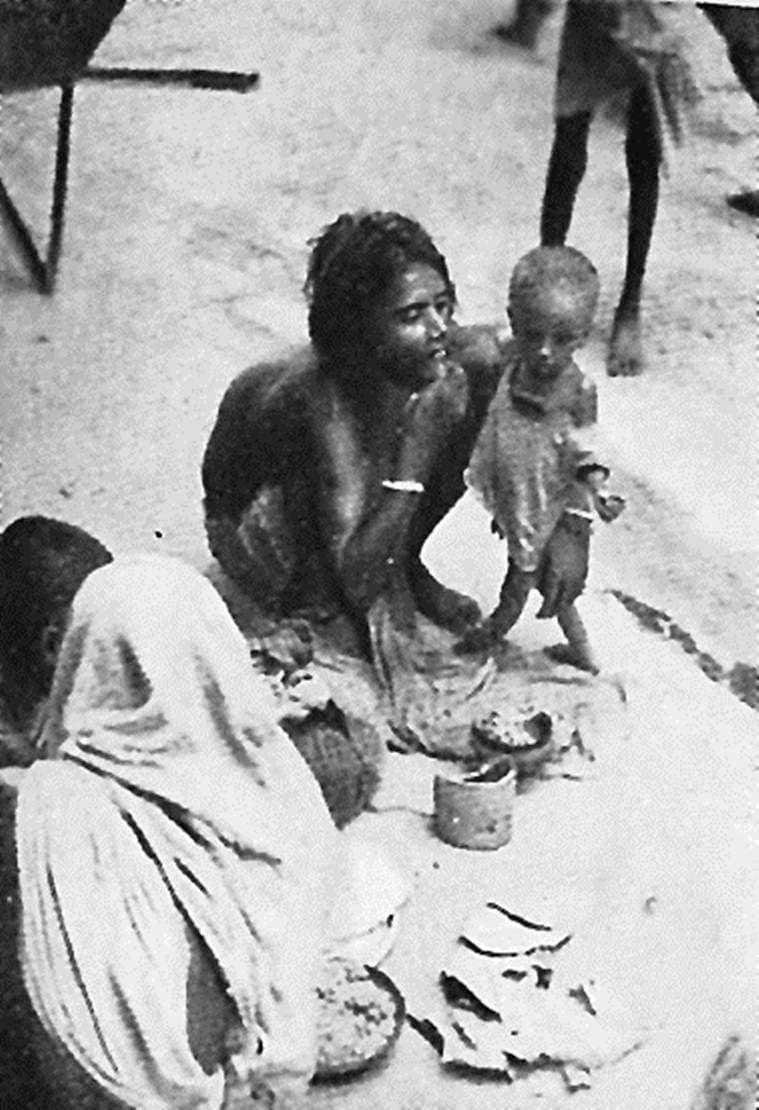Explained: How researchers used science to show Bengal famine was man-made
Between 2 and 3 million are estimated to have died in the Bengal famine of 1943. Previous historical research and literature, as well as Satyajit Ray’s Ashani Sanket (1973), have described how the Bengal famine was a result of British policy.

The simulations showed that a majority of famines were caused by large-scale and severe soil moisture droughts that hampered food production.
Researchers have used old weather data and modern simulation methods to reach a conclusion long acknowledged by historians — the Bengal famine of 1943-44 was not caused by an agricultural drought but was man-made. The new study, led by Prof Vimal Mishra of IIT Gandhinagar’s civil engineering department, has been published in Geophysical Research Letters.
Soil moisture & famine
Using observations from weather stations and simulations with a hydrological model that estimated soil moisture content, the research reconstructed agricultural droughts and established a link between famines and agricultural droughts in India in the half-century between 1870-2016.
While precipitation data from 1901 onwards was available from the India Meteorology Department, the scientists developed a compatible product for 1870-1900, using observations from 1,690 stations spread across India. They estimated a measure called soil moisture percentile, or SMP. When the SMP was less than 20, it was categorised as drought.

A family in Calcutta during the Bengal famine of 1943.
Odd one out
The simulations showed that a majority of famines were caused by large-scale and severe soil moisture droughts that hampered food production. Out of six major famines during the period (1873-74, 1876, 1877, 1896-97, 1899, 1943), the researchers concluded that the first five were linked to soil moisture. The Bengal famine was completely due to the failure of policy during the British era, Prof Mishra said, describing the research as “part history and part science”.
All but two of the famines were found consistent with the drought periods identified by the analysis. The exceptions were 1873-1874 and 1943-1944. The paper says there could be two reasons why the analysis did not identify these as drought periods — they were too localised, or the famine was caused by factors other than soil moisture deficits. For the 1873-1874 famine, which was localised to Bihar and Bengal, the paper concludes that it was the first of these two reasons. “Since the soil moisture drought in 1873 was centered on a relatively small domain, it was not identified by the… analysis,” it says.
On the other hand, Mishra said: “The 1943 Bengal famine was not caused by drought but rather was a result of a complete policy failure during the British era.”
Known & reinforced
Between 2 and 3 million are estimated to have died in the Bengal famine of 1943. Previous historical research and literature, as well as Satyajit Ray’s Ashani Sanket (1973), have described how the Bengal famine was a result of British policy. During World War II, market supplies and transport systems were disrupted. This is attributed to British policies, and prioritisation of distribution of supplies to the military and other select groups.
The new study identified 1937-1945 as a “period under drought based on severity, area, and duration”. “We find the drought was most widespread during August and December 1941 — prior to the famine. This was the only famine that does not appear to be linked directly to soil moisture drought and crop failures,” Mishra said.
He cited British policies: “We find that the Bengal famine was likely caused by other factors related at least in part to the ongoing Asian threat of World War II including malaria, starvation, and malnutrition. In early 1943, military and political events adversely affected Bengal’s economy, which was exacerbated by refugees from Burma. Additionally, wartime grain import restrictions imposed by the British government played a major role in the famine.”
He cited British policies: “We find that the Bengal famine was likely caused by other factors related at least in part to the ongoing Asian threat of World War II including malaria, starvation, and malnutrition. In early 1943, military and political events adversely affected Bengal’s economy, which was exacerbated by refugees from Burma. Additionally, wartime grain import restrictions imposed by the British government played a major role in the famine.”
Geophysical Research Letters.January 2019















